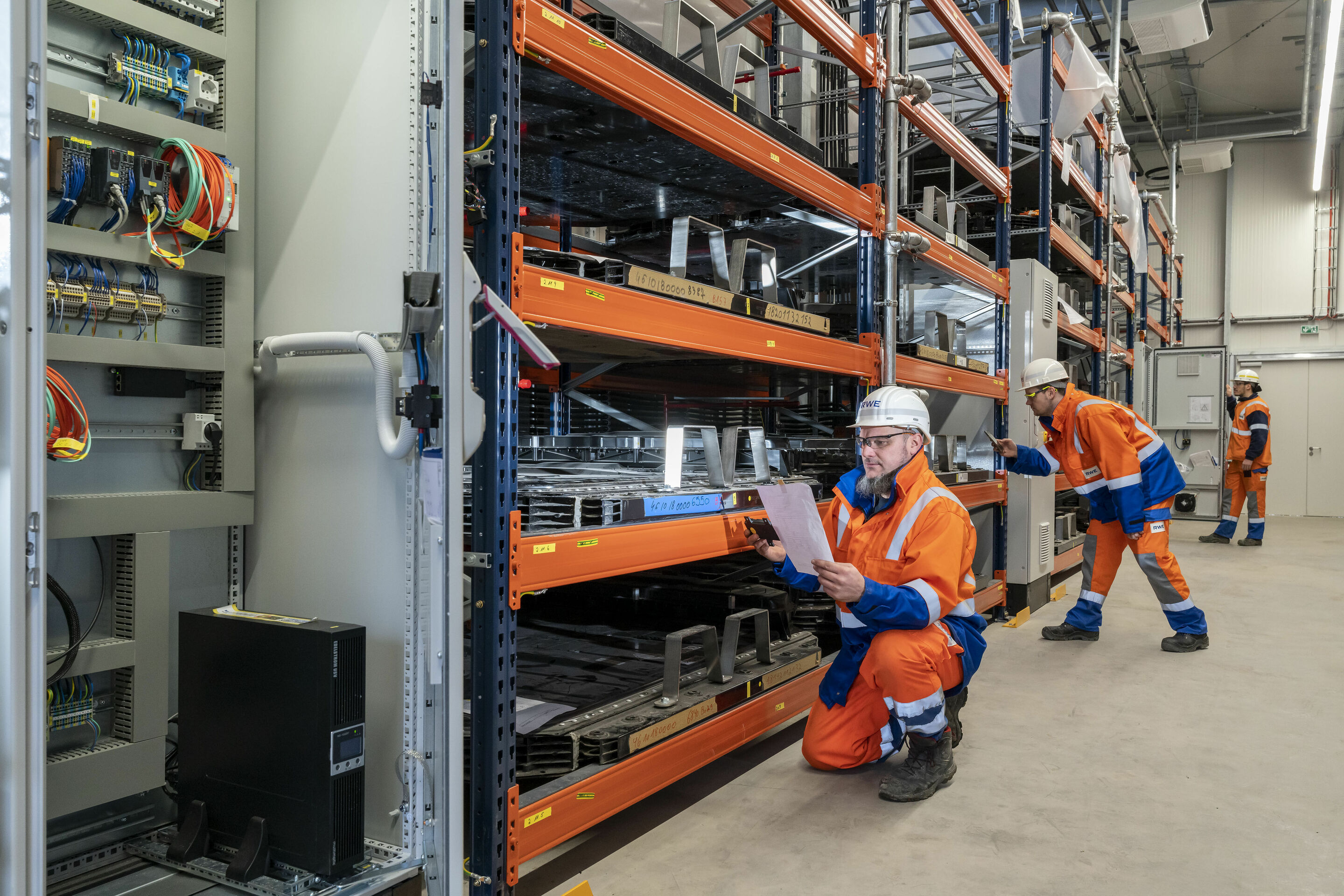Second life for EV batteries: Audi and RWE build new type of energy storage system in Herdecke
- Pilot project has storage capacity of around 4.5 megawatt hours
- Trial operation started in November 2021
- Innovative concept increases operating voltage and cuts costs
Audi and RWE are breaking new ground together to drive the energy revolution forward – RWE has brought an energy storage facility on stream in Herdecke, Germany, that uses used lithium-ion batteries from Audi electric cars. With the help of 60 battery systems, the new type of storage facility on the site of RWE’s pumped-storage power plant on Lake Hengstey will be able to temporarily store around 4.5 megawatt hours of electricity.
The decommissioned batteries provided for the project come from Audi e-tron development vehicles. After their first life in the car, they still have a residual capacity of more than 80 percent. This makes these “second-life batteries” perfect for use in stationary power storage systems. Depending on how they are used, these batteries still have up to ten years of remaining service life. In addition, they are significantly cheaper than new cells. And that’s what a second life is all about – the carbon emissions generated during battery production are sustainably distributed over two lifetimes (one in the car and one as electricity storage).
Oliver Hoffmann, Member of the Board for Technical Development of Audi AG, commented:
“Carbon-neutral mobility is Audi’s ultimate goal. We’re working hard to achieve this ambitious objective. Our plan to launch more than 20 all-electric models by 2025 are an important step in this direction. But our aspirations go far beyond the vehicle, which is why we are advancing the development of sustainable mobility through collaborations with partners from the energy industry. This partnership with RWE is intended to demonstrate the possibilities that exist for the resource-friendly use of second-life high-voltage batteries and their intelligent integration into the power grid of the future. In addition, we are already thinking about the time after this utilization phase and are stepping up our efforts to ensure that batteries are recycled effectively,” said Oliver Hoffmann, Member of the Board for Technical Development of Audi AG.
RWE has already built a 160-square-meter hall in lightweight design for the 60 battery modules, which weigh around 700 kilograms, on the site of its pumped-storage power plant in Herdecke. The installation of the battery systems inside the hall was completed in October. Individual components were brought on stream beginning in November.
RWE expects to begin marketing the storage capacity of its second-life battery storage system in early 2022 – initially to support the power grid as part of frequency maintenance. After that, the company plans to flexibly test other marketing methods.
Roger Miesen, CEO of RWE Generation SE, commented:
“Powerful battery storage plays an essential role in the energy revolution. Flexible storage technologies are needed to compensate for short-term fluctuations in renewable energy and to stabilize the grid. Battery storage systems are ideally suited for this purpose. Together with Audi, in Herdecke we’re testing how end-of-life high-voltage batteries from electric cars behave as stationary energy storage devices when connected together. The continued use of such ‘second-life’ storage is a sustainable alternative to brand-new batteries. The experience gained from this project will help us identify the applications in which we can most cost-effectively operate such battery systems.”
The findings from the reference storage facility in Herdecke will help RWE build and operate larger storage facilities based on EV batteries in the future. These facilities use an innovative technology in which two modules are connected in series, increasing the operating voltage and reducing costs.
| AUDI AG Product and Technology Communications Benedikt Still | RWE |
